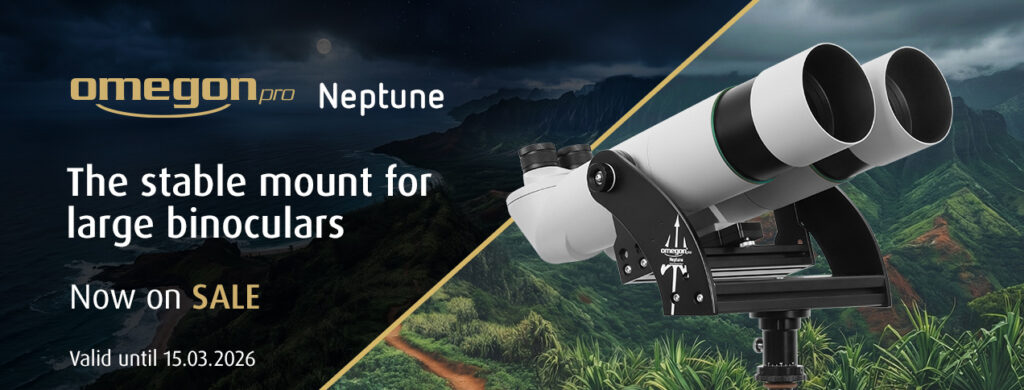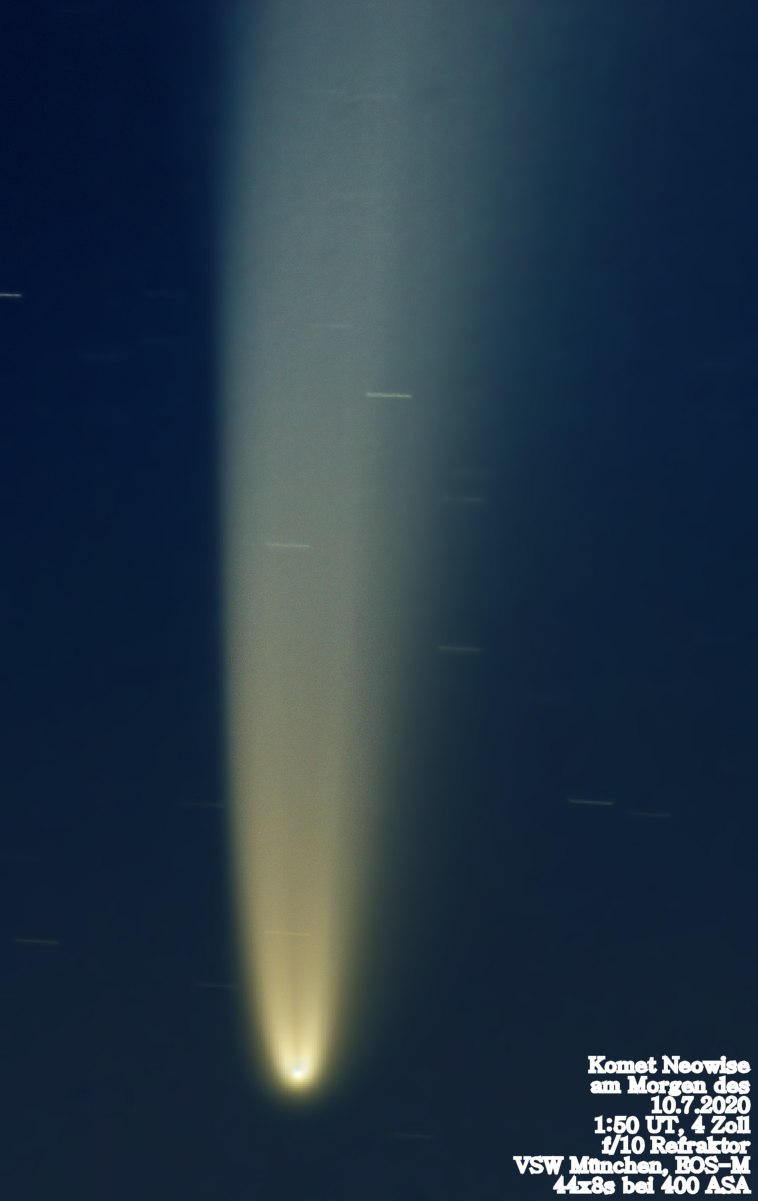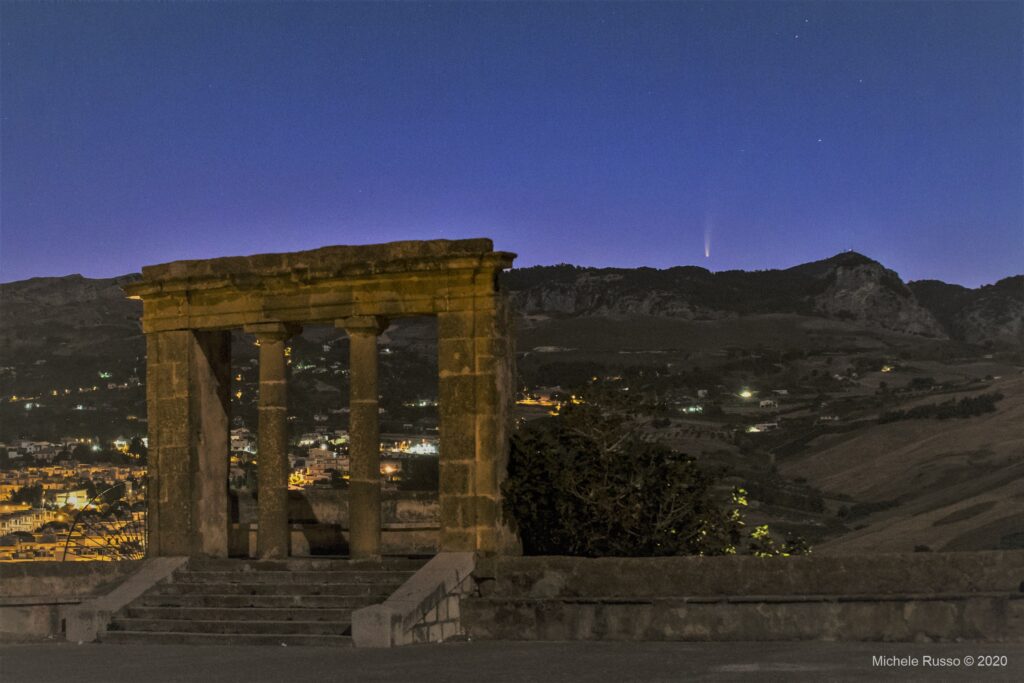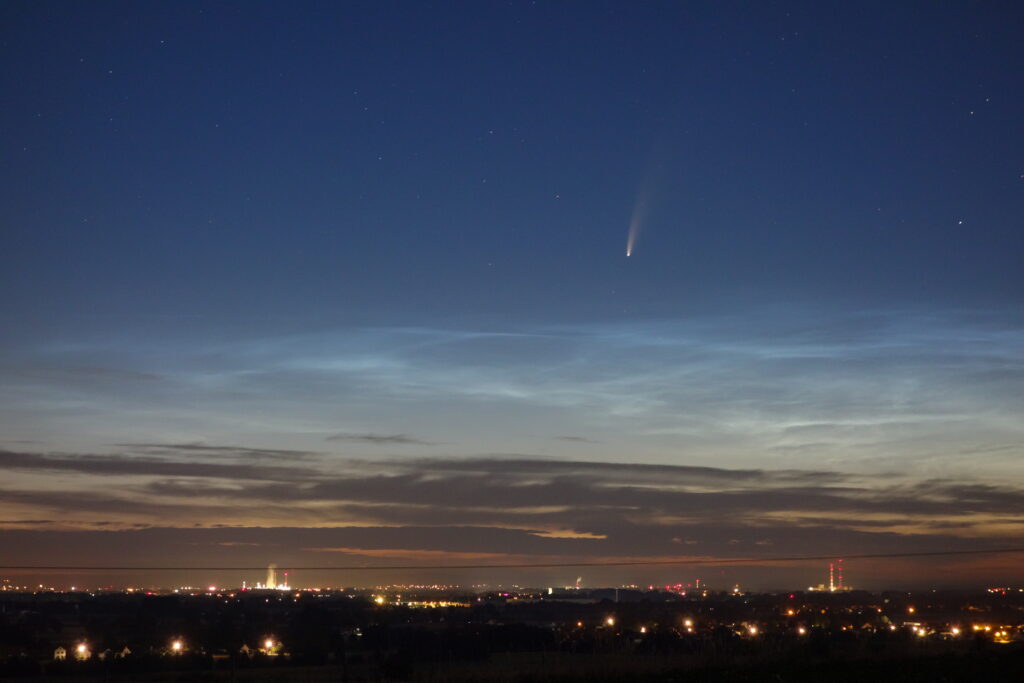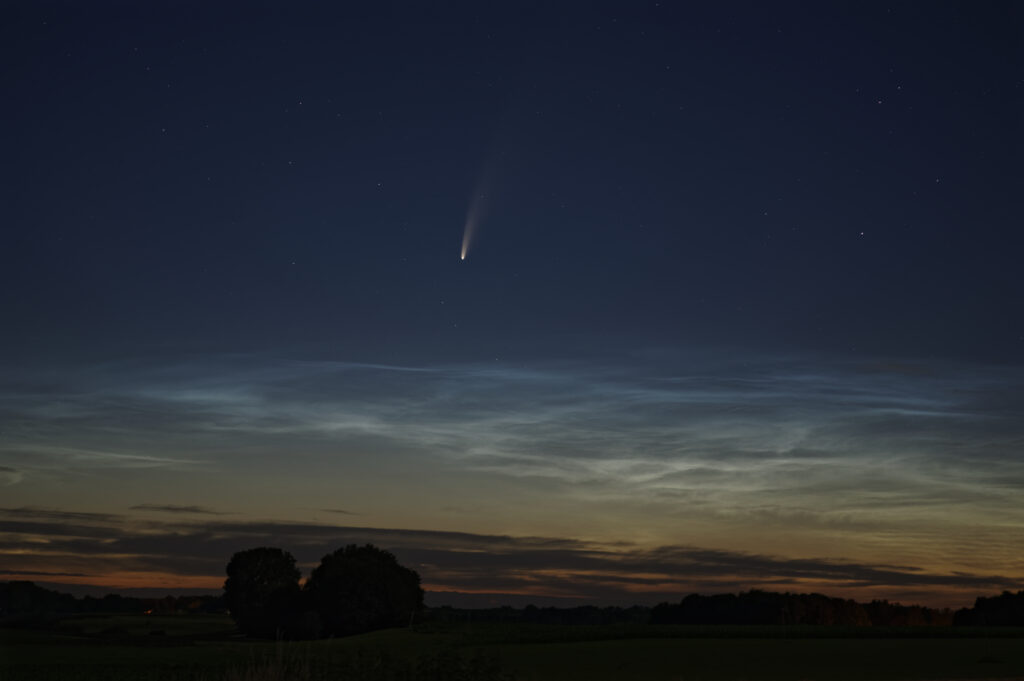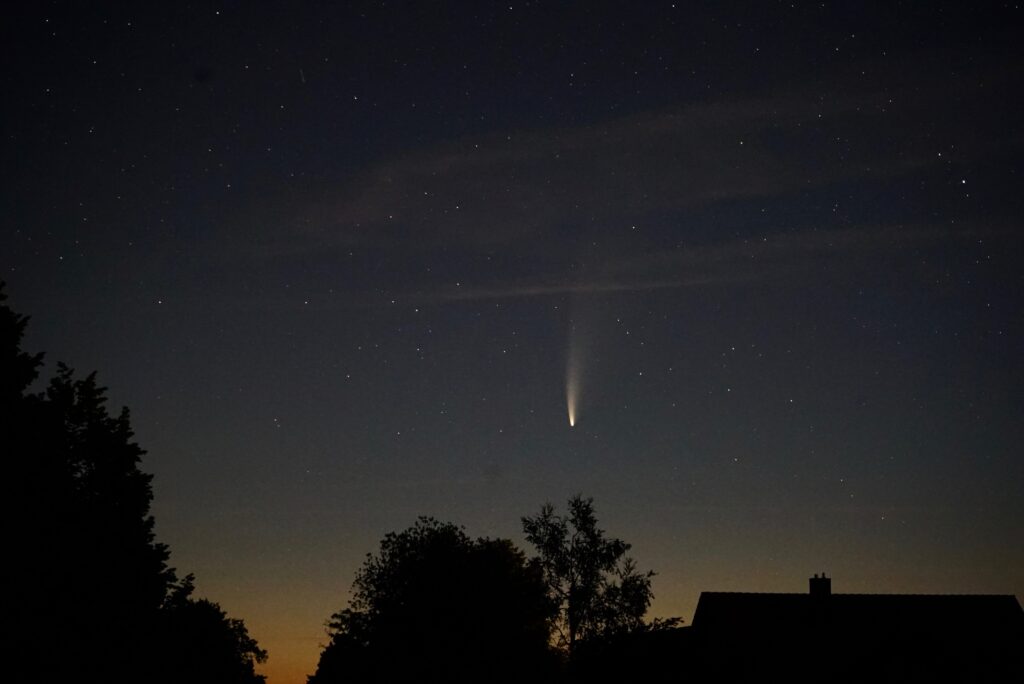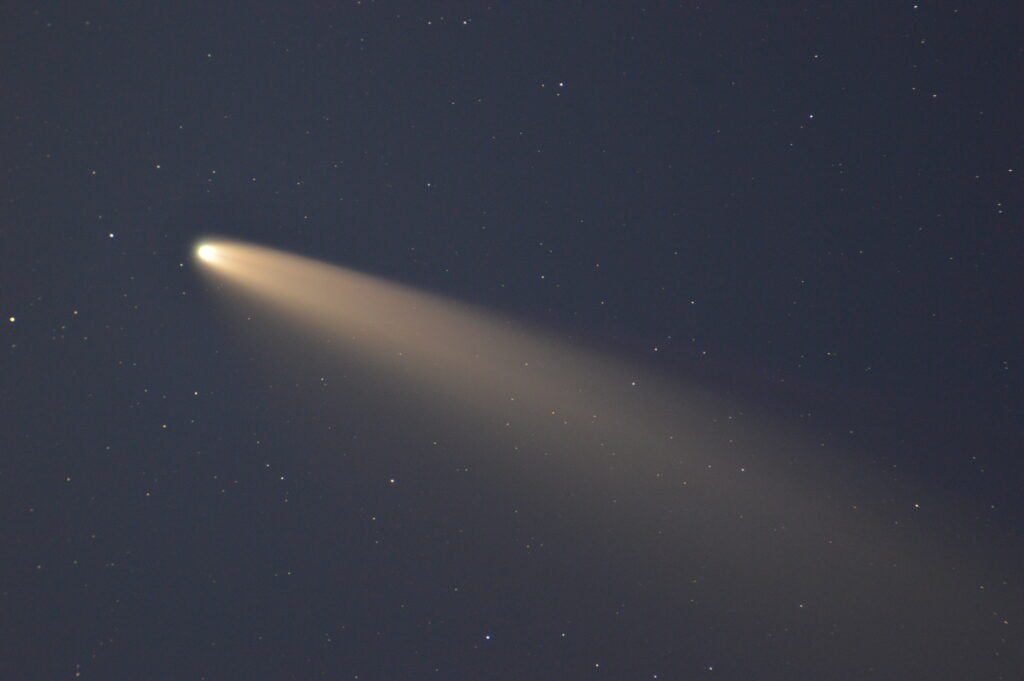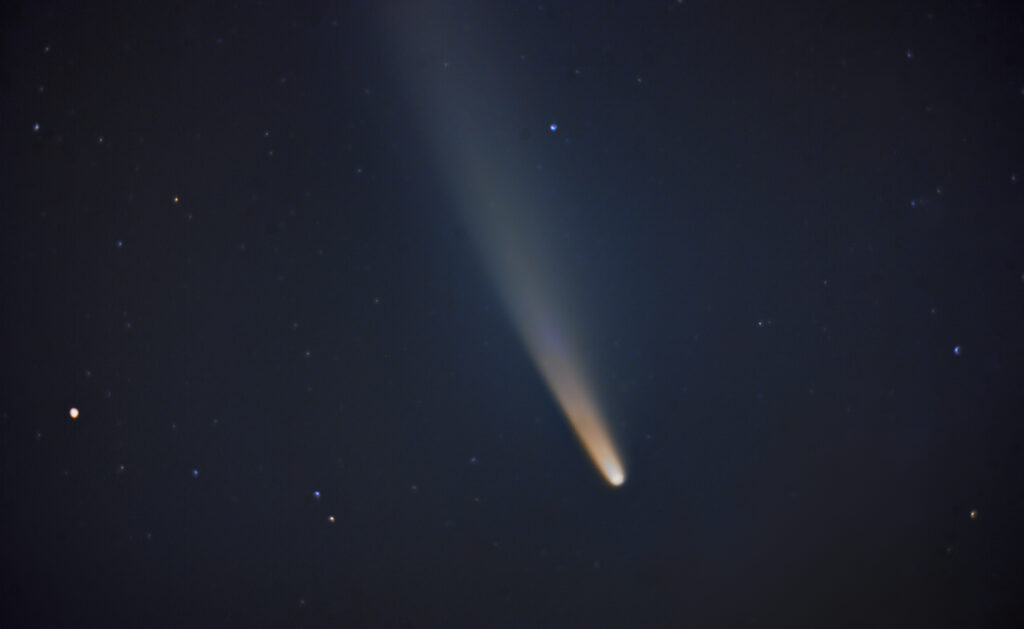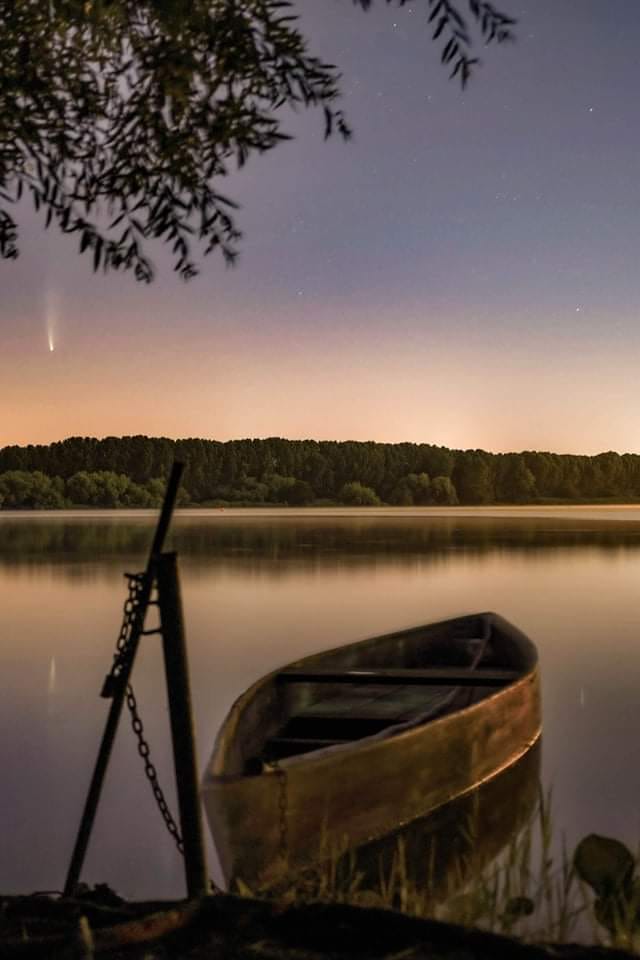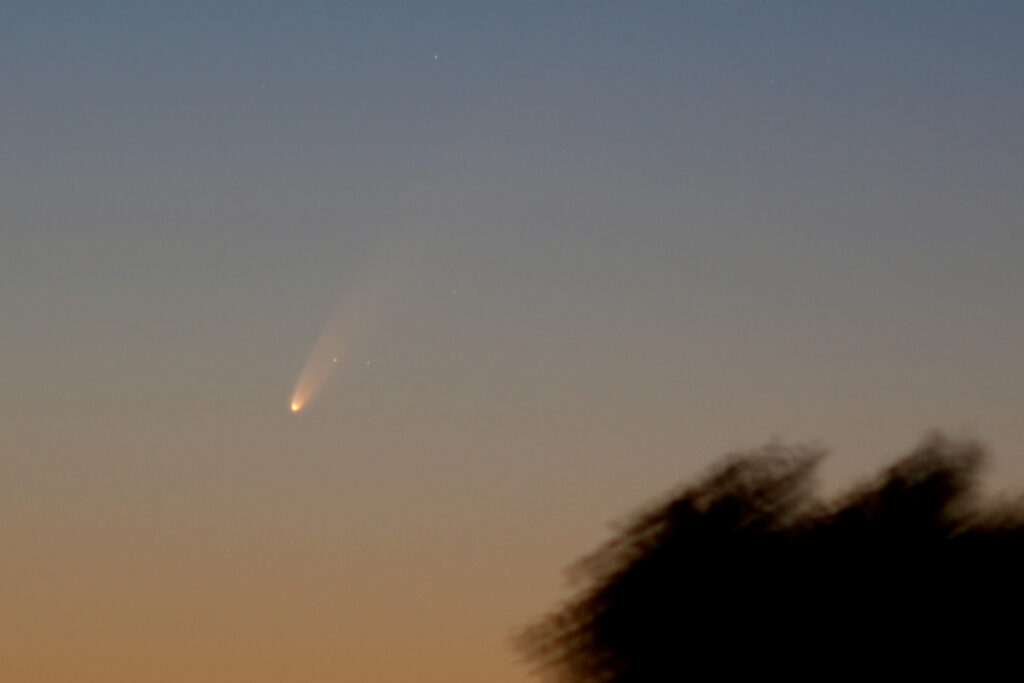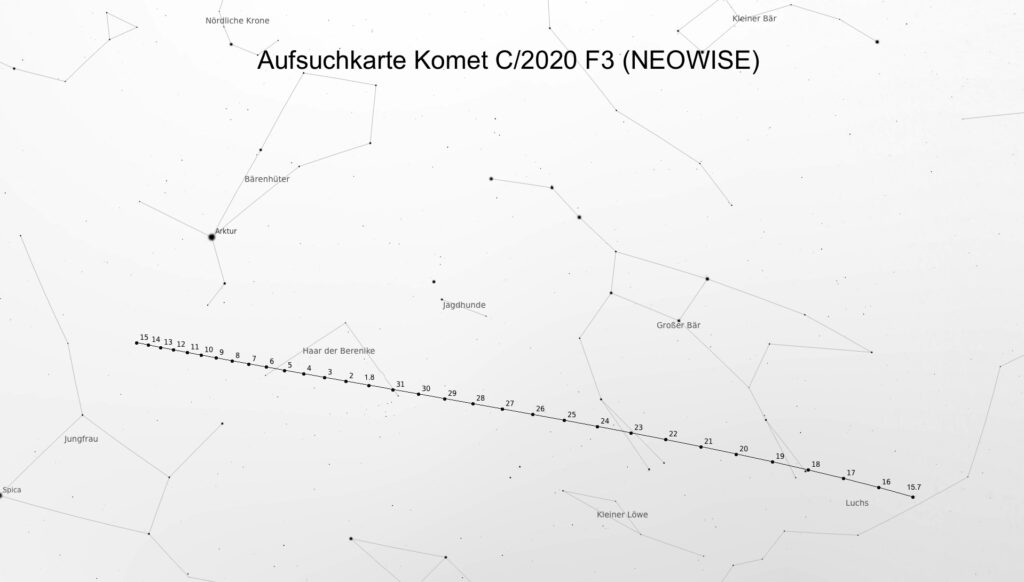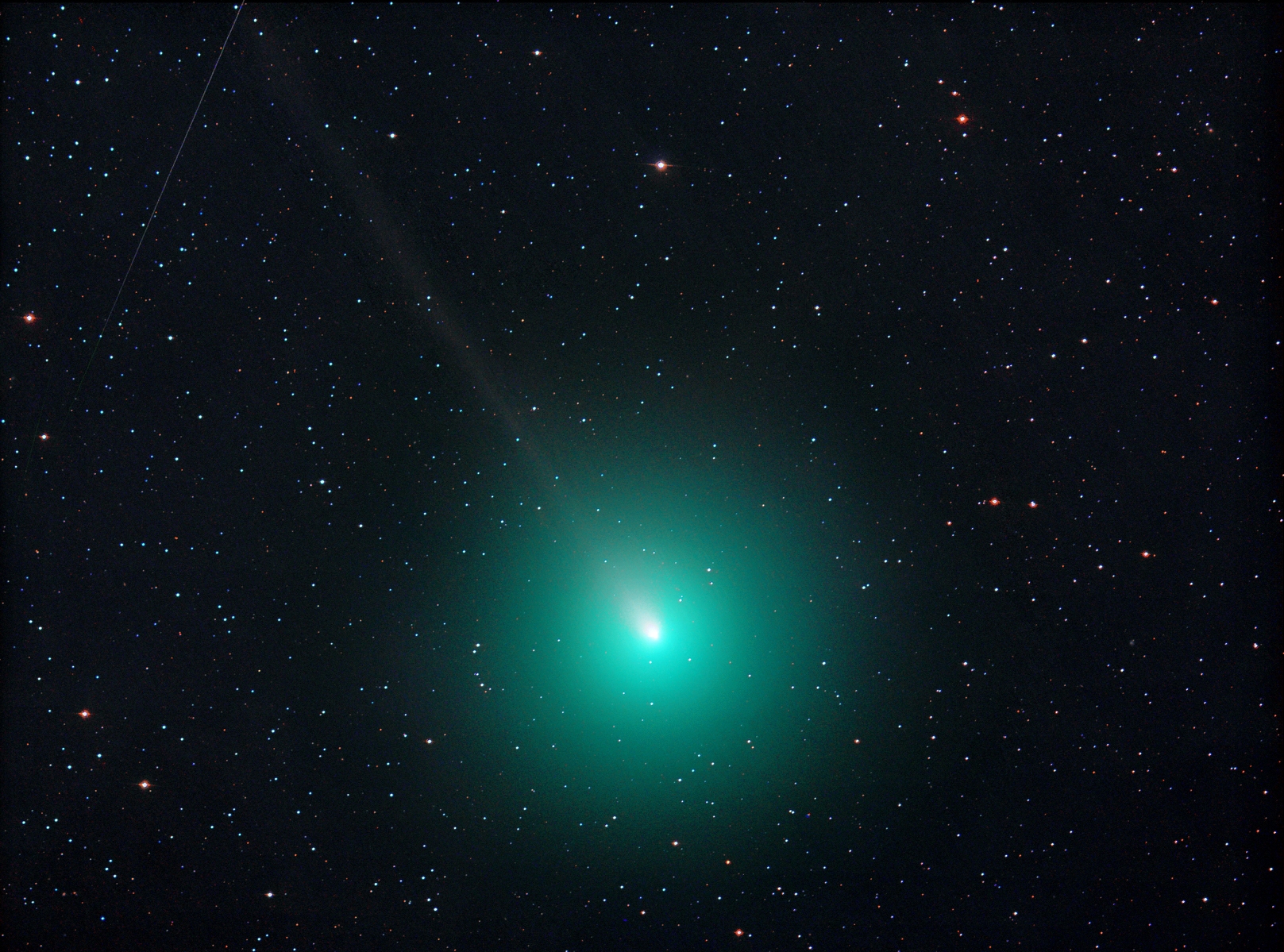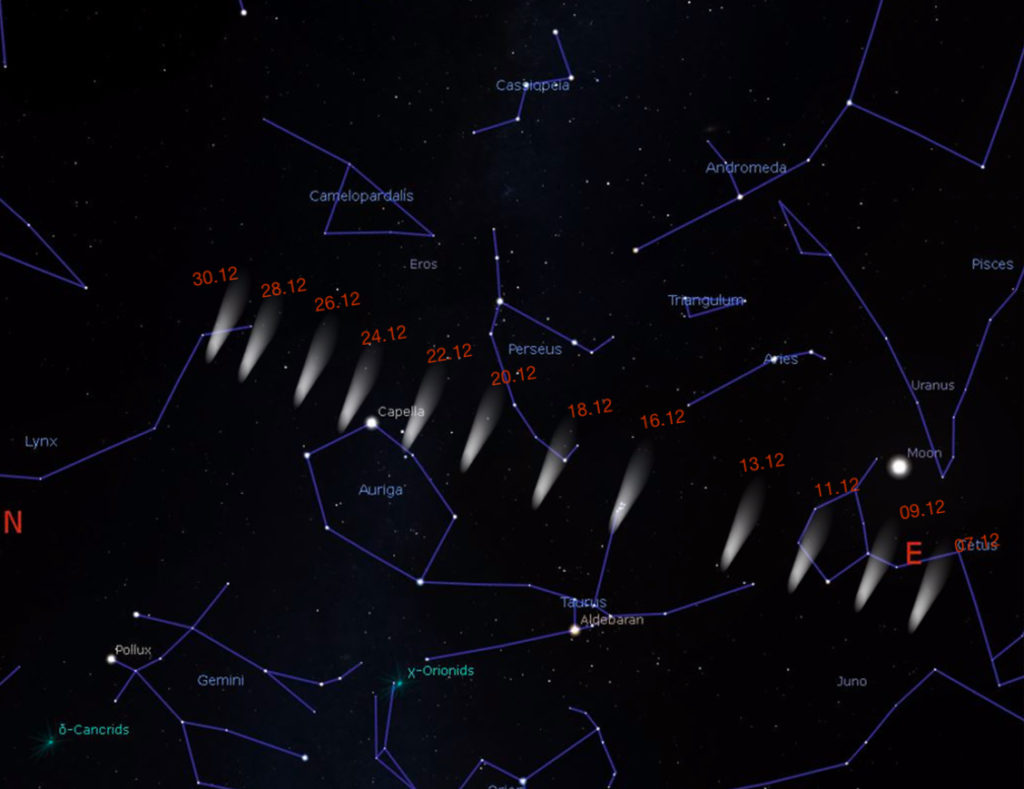A yawning emptiness. No visitors.
For years, there has not been much going on in the vast expanses of the solar systems, just the planets continued their orbits around the sun.
However, the time for waiting has now passed.
We are being visited by a bright comet which could become a real highlight in April and May – maybe even for the naked eye.
It has the wonderful name of C/2019 Y4 ATLAS. Even now, it can be clearly seen with the telescope. During these times of corona, where we have to stay at home and go without social contact, this makes a welcome change. Keep your telescope at the ready because this could be really exciting!
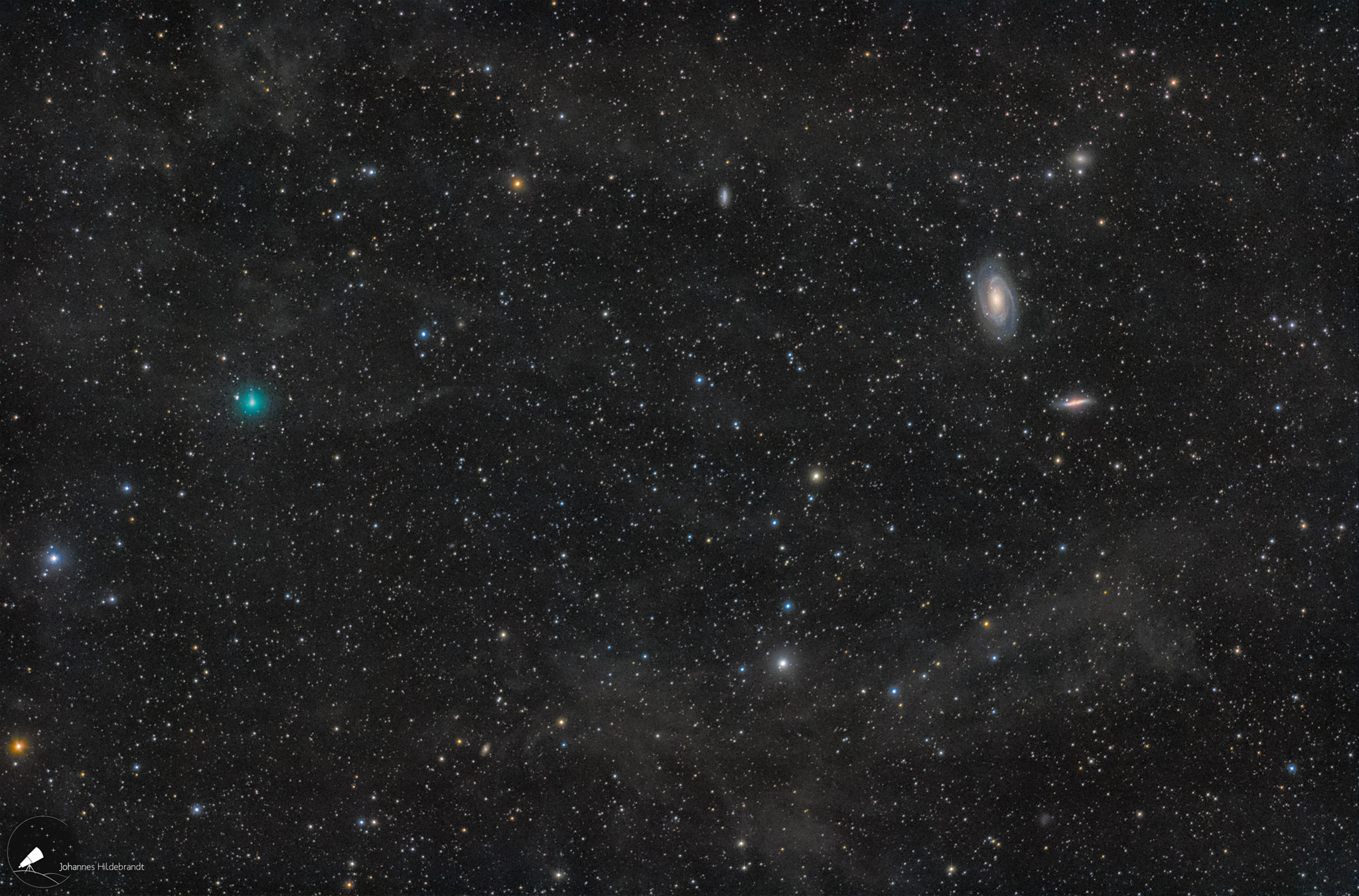
The C/2019 Y4 ATLAS comet, with its green coma, near the M81 and M82 galaxies on the 19th/20th March 2020. Photographed using a Canon 600Da – Canon EF 200mm f2.8 L – @f3.5 (step-down-ring as a front aperture), 76 x 2min -> 2h32min – ISO800, Vixen GP-DX – MGEN II. Editing and processing in DeepSkyStacker and Photoshop. Image author: Johannes Hildebrandt
The major comet of 2020?
Hawaii is home to the Asteroid Terrestrial impact Last Alert System, abbreviated to ATLAS. It scans the sky for near-earth objects, which could be of danger to the earth, and is designed to predict a possible impact. However, on the 28th December 2019, the robot-supported system discovered this comet on its way through our solar system. The astronomers observed that it is following a very similar orbit to that of the Great Comet of 1844 which, at that time, achieved a brightness of -1 mag. There has even been speculation that Y4 ATLAS might possibly be a fragment of the then tail-star and could achieve a similar brightness – this fact alone makes following the path of this comet exciting.
Can we expect to see something similar from the C/2019 Y4 ATLAS?
Strong increase in brightness until May
What is certain is that its brightness is rapidly increasing. At the time of its discovery in December, it was still unreachable at 19 mag. In the interim, however, it has been able to increase its brightness to about eight magnitudes. Overall, this is an increase of 25,000 times! However, it will get really interesting from now until the end of May, because it is continuously getting brighter – in fact, it has already exceeded the original expectations in this respect.
It is now entering our region from the outer planets. On the 24th May, it will race past the earth at a distance of 117 million kilometres away and, on the 31st May, it will reach its closest point to the sun – and this despite being within Mercury’s orbit. According to the forecasts, it may reach a brightness of 2 mag – this would not just make it visible with all types of binoculars, but also with the naked eye!
Really good for us, as inhabitants of the northern hemisphere, is the fact that the comet is almost ideally positioned.
We have already observed it…
During the last few days, some members of our team have already been able to observe the comet. I, too, used last weekend for observation. I was able to identify it immediately using my 12“ Taurus Dobson telescope The diffuse spot stood out clearly from the surrounding stars. The coma appeared uniformly round with a brighter core area. At the edge of a small-town sky, and after observation with my SWA 32mm eyepiece I used a Nagler 11mm with an approx. 140-times magnification. The comet thereby gained even more contrast and stood out even better from the background of the sky. A fantastic experience! However, the comet could also be seen with the 20+40×100 Nightstar large binoculars.
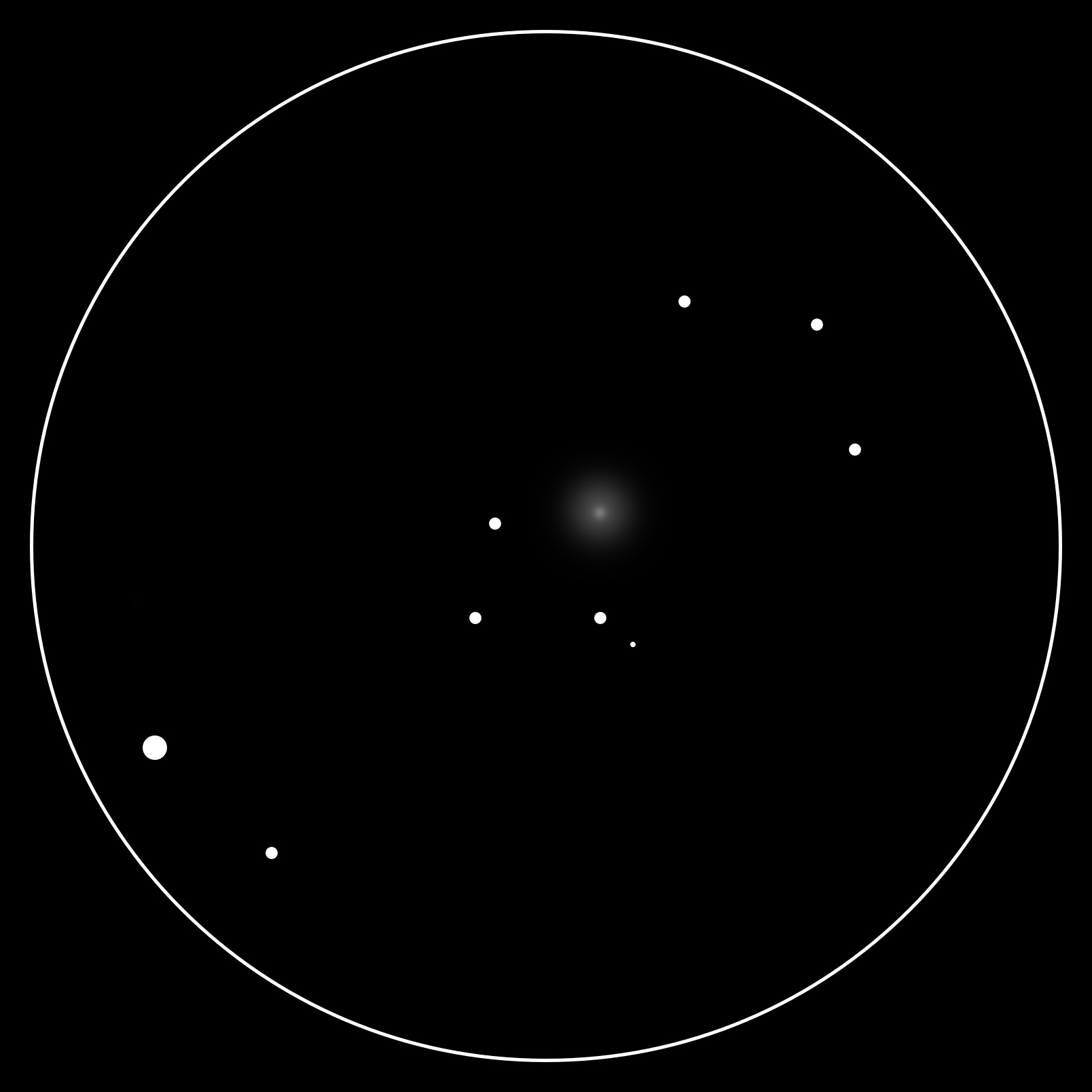
An image of the C/2019 Y4 ATLAS on the 22nd March 2020 which reflects the visual impression of the 12″ Dobson telescope. Marcus Schenk.
Where can you find the C/2019 Y4 ATLAS comet?
Not at the bottom of the horizon, but high up and circumpolar. This is a dream position for an observer! Our vagabond is currently travelling through the Great Bear which is luckily now high in the sky in spring – this means that you have a good opportunity to observe it using your telescope. If you are planning to acquire a telescope first, then now would be a good time.
In the months of April and May, the comet will be moving through the giraffe constellation and heading for Perseus. It will become significantly brighter but, with time, it will lose altitude. At this time, a rather dark place and a few clouds on the horizon become even more important. In these times of corona and strict curfews, I was happy to be able to observe the comet from my garden at its still high altitude.
But, how can one find the comet now?
You can find an up-to-date search map on skyhound.com, for example.
Or, there is an up-to-date map for the respective day at Theskylive.
Would you like to get an even better view of the comet? The Lumicon Comet Filter can help you to see both the coma and a possible gas-tail contrast-enhanced.
Will we be able to see the comet with the naked eye? Well, despite all the calculations and predictions, this is written in the stars. Let us hope for the best! In the meantime, why not enjoy the comet with your telescope or binoculars. After all, who knows how many years we will have to wait again for such a bright comet?
If you are looking for a telescope, accessories or binoculars, we are here for you (despite the intensified corona crisis in Bavaria) and can be reached by phone and email. Furthermore, our courageous colleagues from the shipping department are holding the fort and will immediately despatch your orders.

